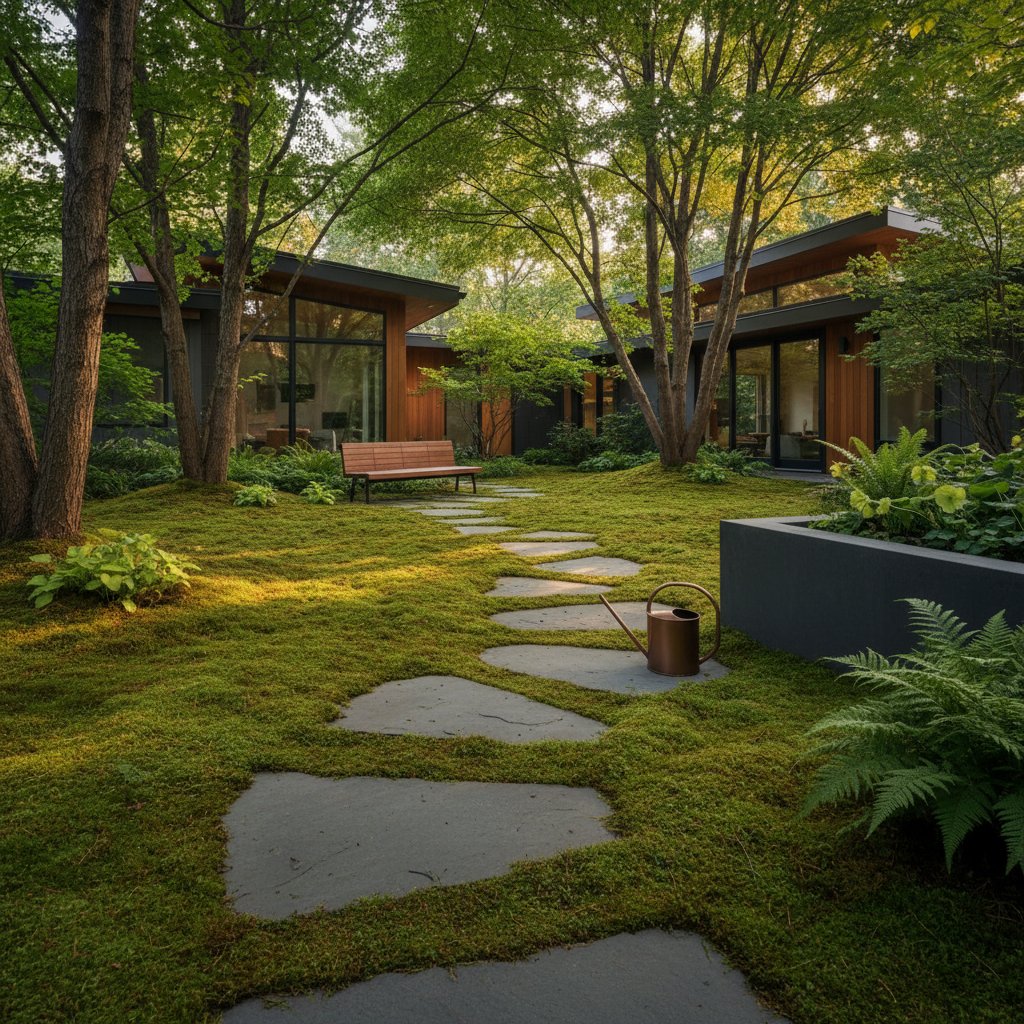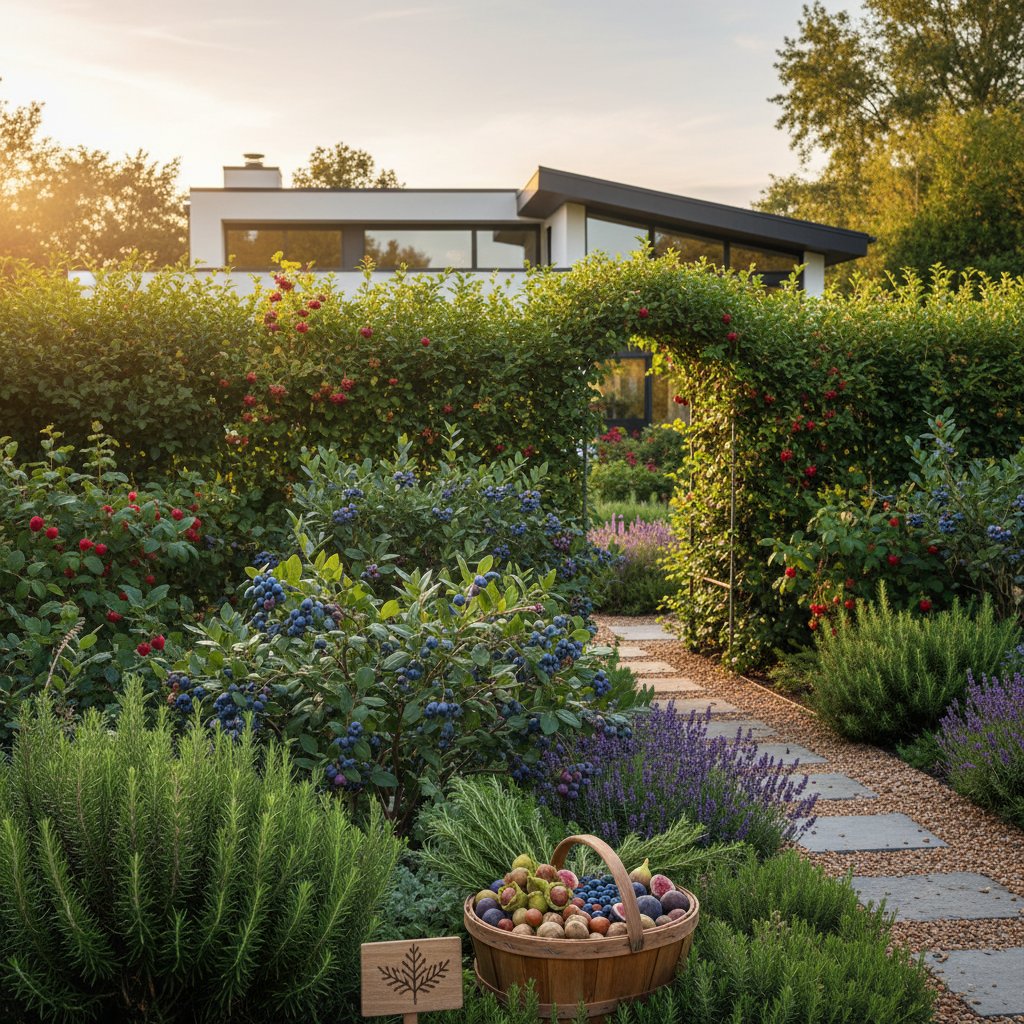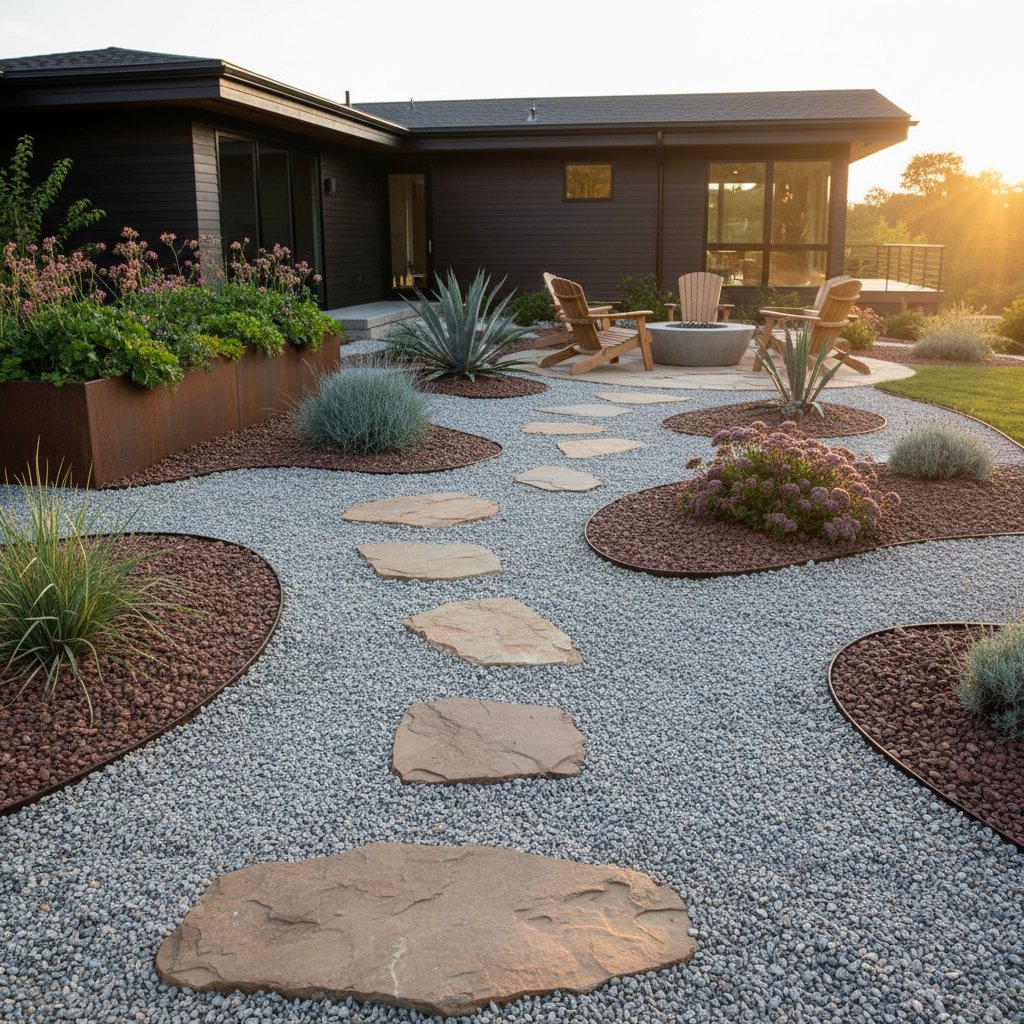Moss Lawns: Embrace a Low-Maintenance Green for 2025
Homeowners often face challenges maintaining traditional grass in shaded or moist environments. Moss lawns provide an elegant solution, delivering a plush, carpet-like surface that remains vibrant without the demands of mowing or watering. This approach aligns with sustainable gardening practices, particularly as water conservation becomes a priority.
In this comprehensive guide, explore the fundamentals of moss lawns, their advantages, installation processes, potential costs, and ongoing care strategies. Whether your yard sits under dense tree cover or along a north-facing slope, moss can transform underutilized spaces into serene, eco-friendly features.
Key Advantages of Moss Lawns for Modern Landscapes
Moss lawns appeal to those seeking simplicity and environmental harmony. They adapt well to conditions that defeat conventional turf, offering both aesthetic and functional improvements.
Minimal Upkeep Requirements
Moss reaches a natural height of just 1 to 3 inches, eliminating the need for weekly mowing. Skip fertilizer applications and chemical pesticides, which reduces exposure risks for family members and wildlife. Occasional raking in fall removes debris, but that marks the extent of routine tasks.
Superior Water Conservation
Moss draws sustenance from atmospheric humidity, fog, and light rainfall, often requiring no supplemental watering after establishment. In regions enforcing drought measures, this feature proves invaluable. Established moss withstands periods of low precipitation, maintaining its color without irrigation systems.
Adaptability to Low-Light Conditions
Traditional grasses demand 4 to 6 hours of direct sun daily to flourish. Moss, however, excels in partial to full shade, absorbing nutrients through diffusion rather than deep roots. Ideal locations include woodland edges, understory plantings, or areas blocked by buildings.
Positive Environmental Impact
Moss acts as a natural air purifier, trapping pollutants and releasing oxygen. Its dense growth prevents soil erosion on slopes and filters stormwater before it reaches waterways. By forgoing synthetic inputs, moss lawns foster healthier ecosystems, supporting small invertebrates and beneficial fungi.
Consistent Seasonal Appeal
While cool-season grasses may yellow in summer heat or winter cold, moss retains its deep green hue across most climates. In temperate zones, it provides winter interest when other plants fade, ensuring year-round visual consistency.
Estimating Costs for a Moss Lawn Project
Budgeting for a moss lawn involves considering materials, labor, and site preparation. Costs vary by scale and method, but long-term savings offset initial investments.
Professional assessments recommend starting with soil tests to confirm suitability, typically costing $20 to $50. Materials break down as follows:
- Pre-grown moss sheets or plugs: $5 to $12 per square foot, offering immediate visual impact.
- Moss slurry or fragments: $1.50 to $4 per square foot for DIY spreading, ideal for larger areas.
- Labor for installation: $3 to $6 per square foot, including clearing and soil amendment.
For a 500-square-foot yard, expect $750 to $3,000 total, depending on approach. Over five years, savings from reduced water (up to 50% less) and no equipment maintenance recoup expenses. Compare this to grass reseeding at $0.10 to $0.20 per square foot annually, plus ongoing costs.
Step-by-Step Installation Guide
Successful moss establishment hinges on proper site preparation and consistent moisture. Begin in spring or fall when temperatures stay below 70 degrees Fahrenheit for optimal rooting.
Preparing the Site
- Clear existing vegetation by hand or with a sod cutter, removing grass roots to prevent regrowth.
- Rake the soil to a depth of 1 inch, breaking up compaction and incorporating organic matter like leaf mold.
- Test soil pH; moss prefers acidic conditions (5.0 to 6.0). Amend with elemental sulfur if levels exceed 6.5, applying 1 to 2 pounds per 100 square feet.
- Water the area thoroughly to create a moist base.
Method 1: Laying Moss Sheets
This technique suits smaller spaces craving quick results.
- Select healthy moss from a nursery, ensuring it matches your site's moisture and shade levels.
- Lay sheets on the prepared soil, staggering seams like brickwork for even coverage.
- Gently press down with a roller or board to ensure soil contact.
- Water lightly daily for 2 to 4 weeks, avoiding pooling to prevent rot.
Method 2: Applying Moss Slurry
A cost-effective option for expansive areas, this encourages natural propagation.
- Harvest moss from a compatible donor site or purchase fragments; avoid overharvesting to preserve natural populations.
- Blend 1 part moss with 2 parts water and a splash of buttermilk to activate spores.
- Pour and spread the slurry evenly, aiming for a thin, uniform layer.
- Mist twice daily, shading if sun exposure occurs, until green shoots appear in 3 to 6 weeks.
Monitor progress; full density may take 6 to 12 months. Patience yields a resilient, interconnected mat.
Addressing Potential Installation Hurdles
Anticipate and mitigate common obstacles to ensure moss thrives from the start.
Brown or Crisping Edges
Excessive sun or erratic watering often causes this. Relocate shading elements like mulch or install temporary fabric covers. Maintain even moisture with a fine spray, targeting morning applications to reduce evaporation.
Slow or Uneven Growth in Patches
Alkaline soil or poor drainage inhibits spread. Retest pH and adjust with pine needles as mulch. Aerate compacted spots and redistribute slurry to encourage uniformity.
Intruding Weeds
Seeds from incomplete clearing lead to competition. Pull weeds by hand weekly during the first season, avoiding herbicides that harm moss. Mulch with fine compost to suppress future germination.
Loose or Detached Sections
Inadequate pressing or rapid drying disrupts adhesion. Reapply pressure with a tamper and resume misting. Rhizoids form stronger bonds within 4 to 6 weeks under consistent humidity.
Most challenges resolve with prompt intervention, leading to a stable lawn.
Sustaining and Enhancing Your Moss Lawn
Beyond installation, moss rewards with enduring performance when given basic attention. Annual inspections identify needs early, preserving its vitality.
Rake gently in autumn to clear leaves, preventing smothering. In dry climates, a monthly deep soak during establishment year supports resilience. Introduce companion plants like ferns or hostas for layered interest without competing for resources.
Over time, moss evolves into a textured mosaic, enhancing biodiversity and property value. It lowers urban heat by shading soil and invites peaceful contemplation in garden designs. Consult local experts for region-specific varieties, ensuring long-term success.
Launching Your Moss Lawn Transformation
Assess your yard's shade and moisture patterns to confirm moss suitability. Source materials from reputable suppliers like Dickinson's Garden Center for quality assurance. Start small with a test plot to build confidence, then expand to full coverage. This shift not only simplifies maintenance but also cultivates a thriving, nature-integrated outdoor haven.



